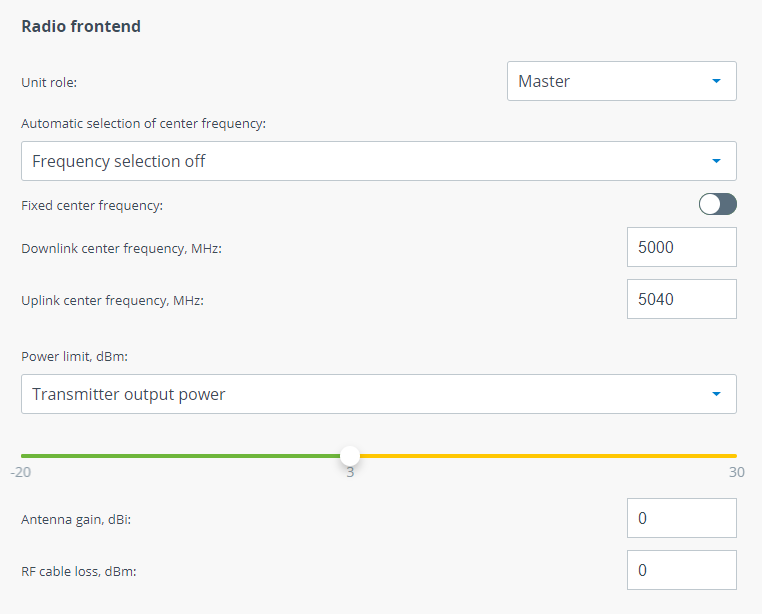The "Radio Settings" contains radio settings, which should be configured to establish wireless connection.
Radio settings are divided into following categories:
Radio frontend
| Parameter | Description |
|---|---|
| Unit role | One link unit must be set to Master and the other one to Slave. At the link setup phase the following parameters must be set to the same value on Master unit and Slave unit:
When a wireless link is established Slave unit will continuously inherit radio frontend parameters from Master unit excluding frequency channel grids. So, if you change some values on Master they will be set on Slave automatically. |
| Automatic selection of center frequency | There are several approaches to define center frequencies in Quanta 5:
|
| Independent UL/DL center frequencies | Units may transmit on diffrerent center frequencies.
|
| Power limit | Power limit parameter limits the transmitter power, there are two modes:
Tx Power + Antenna gain + Cable loss |
Air frame
| Parameter | Description |
|---|---|
| Channel width | Channel width, shoud be the same on both Master and Slave units. |
| Frame period | Frame period affects the following wireless link metrics:
Please note that frame period value is strongly depends on interference conditions. If larger frames will be dropped then larger payload is lost and system performance is decreased significantly. If smaller frames will be dropped then smaller payload is lost and system performance is decreased not so significantly. |
| Guard interval | Guard interval is intended for intersymbol interference elimination. One of the causes of intersymbol interference is multipath propagation in which a wireless signal from a transmitter reaches the receiver via multiple paths. Guard interval affects payload size. So it should be increased only in case of intersymbol interference. |
| Uplink/Downlink ratio |
